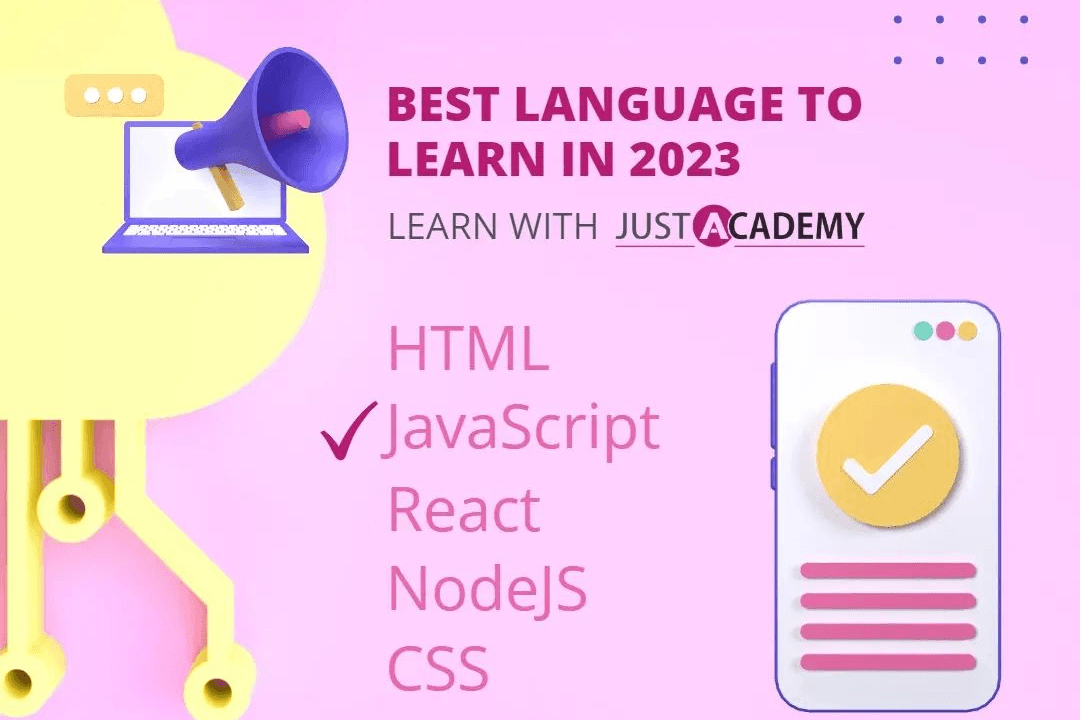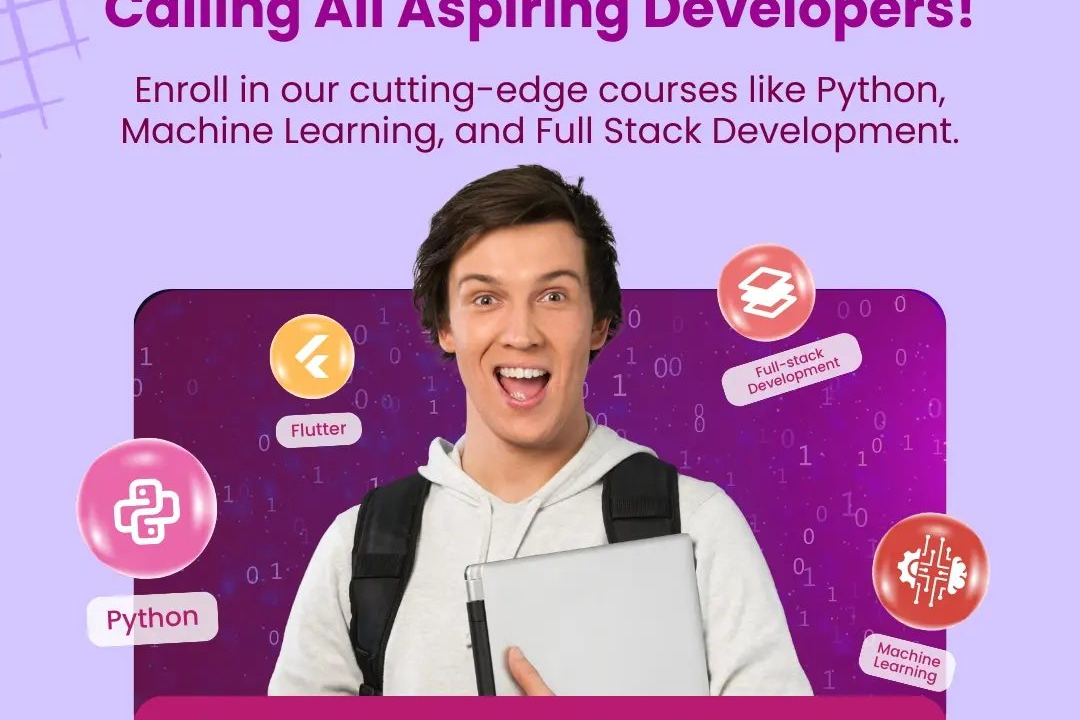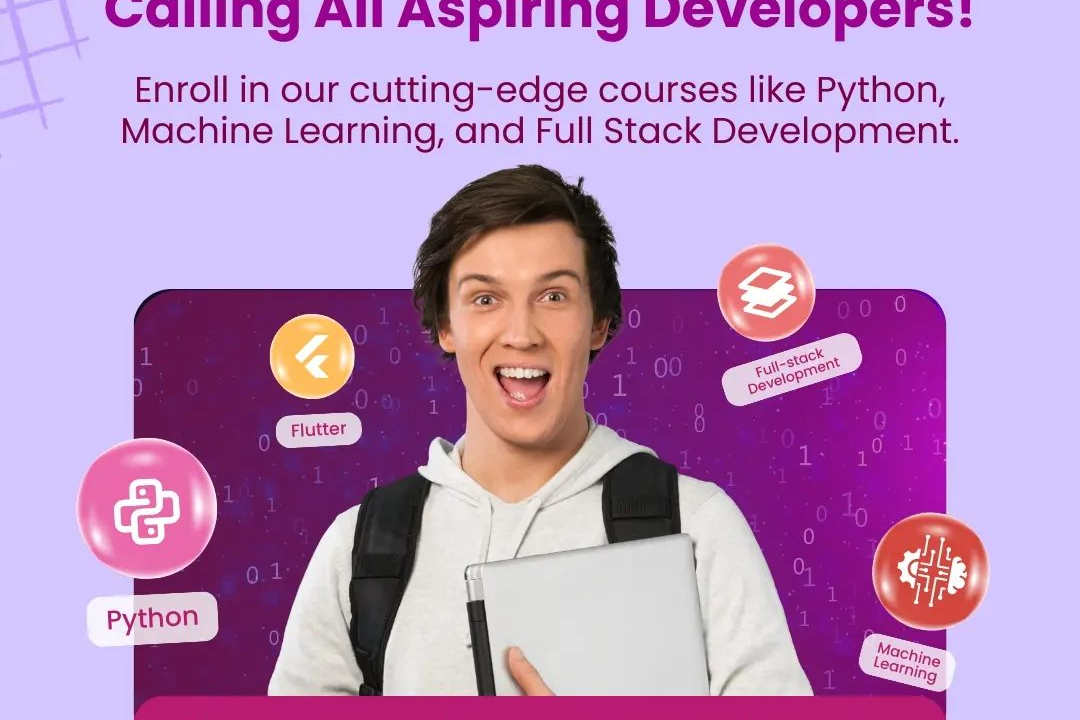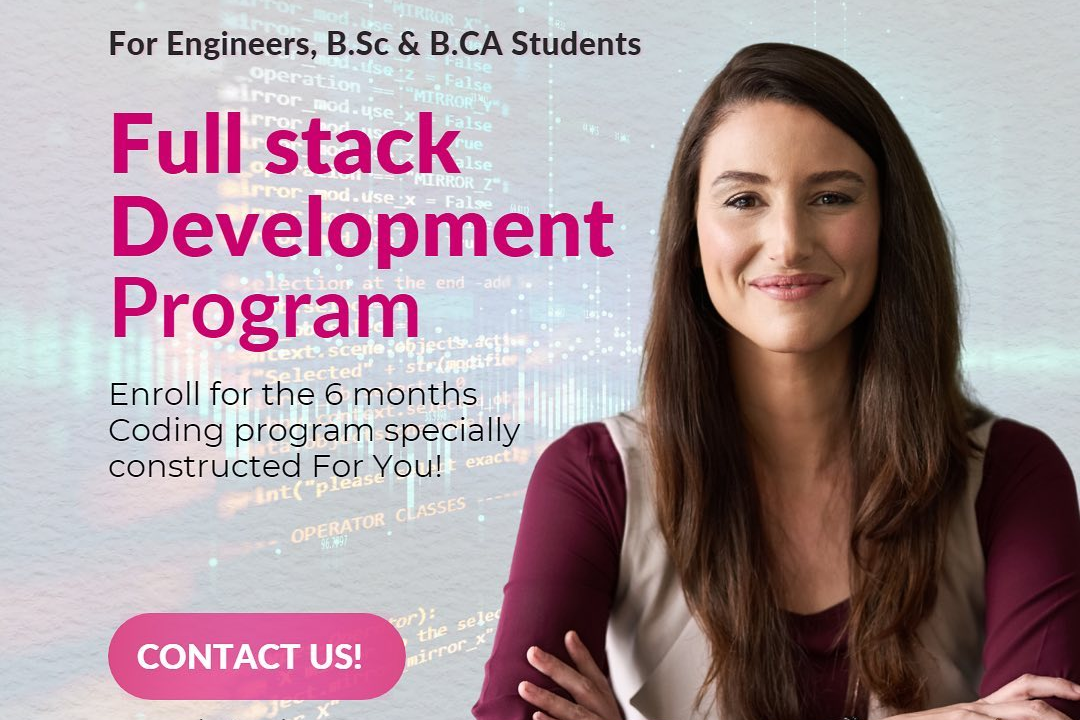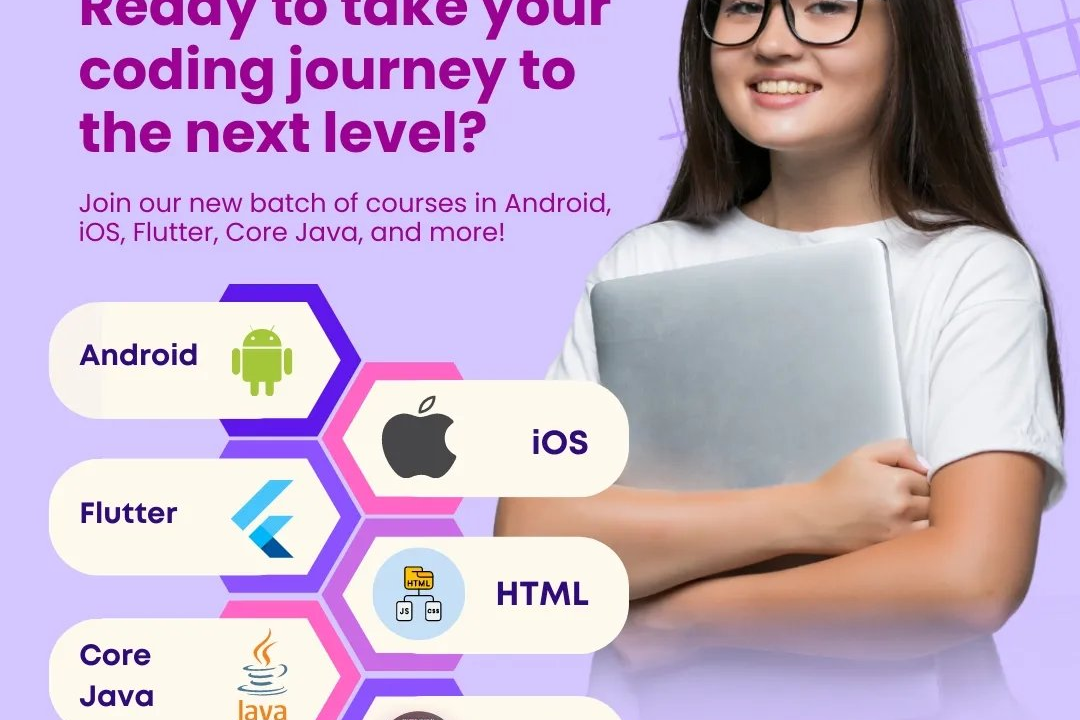Even And Odd Numbers Program In Php
In PHP, an even and odd number program is a simple script that determines whether a given integer is
Even And Odd Numbers Program In Php
An even and odd numbers program in PHP serves as a foundational exercise to understand control structures and operators in programming. It helps learners grasp how to perform conditional checks using the modulus operator, which is essential for tasks such as input validation, data categorization, and implementing logic based on number properties. This type of program is particularly useful in scenarios like sorting data, generating patterns, or creating dynamic content based on numeric input, making it a valuable stepping stone for developing more complex PHP applications.
To Download Our Brochure: https://www.justacademy.co/download-brochure-for-free
Message us for more information: +91 9987184296
An even and odd numbers program in PHP serves as a foundational exercise to understand control structures and operators in programming. It helps learners grasp how to perform conditional checks using the modulus operator, which is essential for tasks such as input validation, data categorization, and implementing logic based on number properties. This type of program is particularly useful in scenarios like sorting data, generating patterns, or creating dynamic content based on numeric input, making it a valuable stepping stone for developing more complex PHP applications.
Course Overview
The ‘Even and Odd Numbers Program in PHP’ course introduces core PHP concepts through practical examples. Participants learn to identify and differentiate between even and odd numbers using control structures and the modulus operator. The course emphasizes hands-on coding to build foundational skills in PHP, enabling learners to create simple algorithms, validate inputs, and develop logical programming skills essential for building dynamic web applications.
Course Description
Learn to identify and work with even and odd numbers in PHP through practical coding examples. This course covers control structures, the modulus operator, and logic implementation to help you build foundational PHP programming skills efficiently.
Key Features
1 - Comprehensive Tool Coverage: Provides hands-on training with a range of industry-standard testing tools, including Selenium, JIRA, LoadRunner, and TestRail.
2) Practical Exercises: Features real-world exercises and case studies to apply tools in various testing scenarios.
3) Interactive Learning: Includes interactive sessions with industry experts for personalized feedback and guidance.
4) Detailed Tutorials: Offers extensive tutorials and documentation on tool functionalities and best practices.
5) Advanced Techniques: Covers both fundamental and advanced techniques for using testing tools effectively.
6) Data Visualization: Integrates tools for visualizing test metrics and results, enhancing data interpretation and decision-making.
7) Tool Integration: Teaches how to integrate testing tools into the software development lifecycle for streamlined workflows.
8) Project-Based Learning: Focuses on project-based learning to build practical skills and create a portfolio of completed tasks.
9) Career Support: Provides resources and support for applying learned skills to real-world job scenarios, including resume building and interview preparation.
10) Up-to-Date Content: Ensures that course materials reflect the latest industry standards and tool updates.
Benefits of taking our course
Functional Tools
1 - PHP Programming Language: The core tool used in the course is PHP, a popular server side scripting language renowned for its simplicity and wide adoption in web development. Students learn the syntax, structure, and function of PHP to develop dynamic web applications. PHP's built in functions and ease of integration with HTML make it an ideal choice for fundamental programming exercises like detecting even and odd numbers. Understanding PHP enables students to build a solid foundation in server side scripting, which is essential for creating interactive websites and web based projects. The course emphasizes practical application of PHP fundamentals through hands on exercises, ensuring learners gain confidence in writing and executing code efficiently.
2) Code Editor (such as VS Code or Sublime Text): To write, edit, and debug PHP scripts effectively, students employ advanced code editors like Visual Studio Code or Sublime Text. These editors offer syntax highlighting, code auto completion, and debugging plugins that facilitate a smoother learning experience. They help students to identify errors easily and understand code structure better. The integration of extensions and templates accelerates the development process. Hands on training on these tools improves students' productivity and prepares them for real world coding environments.
3) Web Server Environment (XAMPP, WAMP, or LAMP): For executing PHP scripts locally, students utilize web server environments like XAMPP, WAMP, or LAMP stacks. These tools bundle Apache server, MySQL database, and PHP, creating a comprehensive environment for testing and running server side code. They allow students to simulate real deployment conditions on their local machines, making it easier to observe how PHP scripts perform in a web context. Learning to set up and configure these environments enhances troubleshooting skills and deepens understanding of web hosting basics. Practical sessions include deploying simple PHP programs, such as the even and odd number checker, on these servers.
4) Browser for Testing and Viewing Output: Once PHP scripts are developed, students use web browsers like Chrome, Firefox, or Edge to test their programs. Browsers serve as the front end for viewing the output generated by PHP code. Students learn how to access their PHP files via URLs, observe the results, and interpret errors or unexpected behaviors visually. This exercise reinforces the linkage between server side scripts and client side display, emphasizing web development principles. Interactive testing fosters immediate feedback, encouraging iterative learning and debugging practices.
5) Version Control Tools (like Git): To manage and track changes in their codebase, students are introduced to version control tools such as Git. This skill is vital in collaborative development, ensuring code integrity and facilitating rollbacks when necessary. Students learn how to initialize repositories, commit changes, and synchronize their work with platforms like GitHub or GitLab. Version control instills discipline for maintaining organized code and fosters collaboration skills, which are critical for working on real time projects. Through hands on exercises, learners understand the importance of systematic code management.
6) Online Documentation and Resources: Supplementing practical exercises, students utilize official PHP documentation, tutorials, and online forums. These resources provide detailed explanations, example codes, and troubleshooting tips for addressing common issues encountered during scripting. Familiarity with such tools empowers students to independently find solutions, boosting self reliance. Access to comprehensive, up to date information ensures that learners stay aligned with industry standards and best practices. Engaging with these resources promotes continuous learning and skill mastery.
7) Debugging Tools and Techniques: Debugging is an integral part of the learning process. Students are introduced to debugging tools such as browser developer tools and PHP error reporting configurations. They learn how to interpret error messages, trace code execution, and resolve issues efficiently. These techniques develop critical thinking skills necessary for problem solving in real projects. Effective debugging practices enable students to write robust and error free code, laying a strong foundation for advanced programming concepts.
8) Integrated Development Environment (IDE): For a more streamlined coding experience, some students may use IDEs like PHPStorm or NetBeans. These environments offer advanced features such as code suggestions, real time error detection, and integrated debugging. Working within an IDE accelerates learning by providing contextual assistance and reducing syntax errors. The course introduces students to the benefits of IDEs and guides them on setting up a suitable environment for PHP development, thus preparing for professional coding workflows.
9) Testing Suites and Automation Tools: As students advance, they may explore testing frameworks like PHPUnit for PHP. These tools facilitate automated testing of scripts to ensure correctness and performance. Incorporating testing procedures teaches students how to validate their code systematically, which is essential in professional development. Understanding testing routines helps in identifying bugs early and maintaining high code quality, especially in large scale projects.
10) Collaboration Platforms: Tools like GitHub or Bitbucket are introduced for collaborative coding, code review, and project management. These platforms allow students to work together remotely, share their code repositories, and receive feedback from instructors or peers. Familiarity with collaboration tools reflects real world developer workflows and encourages teamwork. The course emphasizes best practices for collaborative development, including pull requests and issue tracking, fostering a professional environment for learners.
11 - Database Management Systems (MySQL or MariaDB): To develop dynamic and data driven applications, students gain foundational knowledge of database systems such as MySQL or MariaDB. They learn how to create, manage, and query databases to store and retrieve information effectively. Integrating PHP with databases enables functionalities like user authentication, data entry, and report generation. Practical exercises include connecting PHP scripts to databases, performing CRUD (Create, Read, Update, Delete) operations, and understanding data security best practices.
12) HTTP Protocol and Web Communication: Students are introduced to the basics of HTTP, the foundational protocol for web communication. Understanding how browsers communicate with servers helps learners grasp concepts like request response cycles, status codes, and session management. These insights are crucial when developing web applications that interact seamlessly with users. Hands on projects demonstrate how PHP handles incoming data via GET and POST requests, improving learners' grasp of client server interactions.
13) Security Fundamentals (Input Validation, Sanitization, and Basic Authentication): The course emphasizes the importance of securing web applications by teaching techniques such as input validation, data sanitization, and implementing authentication mechanisms. Students learn to prevent common vulnerabilities like SQL injection and cross site scripting (XSS). These skills ensure that their PHP applications are not only functional but also resilient against potential security breaches, fostering responsible coding practices.
14) Responsive Design Principles and Integration with Front End Technologies: Although primarily focused on backend scripting, students are introduced to basic responsive design concepts and how PHP interacts with front end technologies like HTML, CSS, and JavaScript. This integrated understanding ensures that the output of PHP scripts adapts well to different devices and screen sizes, improving user experience. Practical sessions may include embedding PHP within HTML templates and dynamically generating content.
15) Deployment and Hosting: After mastering local development, students explore deployment strategies to host their applications online. They learn about web hosting services, domain management, SSL certificates, and deployment workflows. Understanding server setup and deployment prepares students to launch real world projects publicly, ensuring their applications are accessible, secure, and scalable.
16) Basic Object Oriented Programming (OOP) Concepts: To elevate their scripting abilities, students are introduced to OOP principles such as classes, objects, inheritance, and encapsulation within PHP. Learning OOP enables the creation of modular, reusable, and maintainable code structures. This foundational knowledge supports scaling applications and collaborating efficiently in larger development teams.
17) Use of Frameworks and CMS Platforms (Optional introductory exposure): Although the course mainly focuses on core PHP, students may receive an overview of popular PHP frameworks like Laravel or CodeIgniter, and Content Management Systems (CMS) like WordPress. This exposure provides insights into industry standard development practices and simplifies complex application building, paving the way for advanced learning.
18) Real Time Project Development: A key feature of the course is applying acquired skills to real world projects. Students work on end to end development tasks such as building a mini e commerce site, blog platform, or user registration system. This practical experience solidifies their understanding, enhances problem solving skills, and produces portfolio ready work that showcases their capabilities to potential employers.
19) Cross Platform Compatibility and Testing: Students learn how to ensure their PHP applications work consistently across different browsers and devices. Techniques include responsive testing tools, browser developer tools, and validation standards. Focusing on compatibility enhances the robustness of their applications in diverse environments, an essential competence for professional development.
20) Continuous Learning and Industry Trends: The course encourages learners to stay updated with evolving PHP versions, emerging web technologies, and industry best practices. They are guided on how to access ongoing resources, participate in developer communities, and continue skill development beyond the certification. Emphasizing continuous learning prepares students to adapt in a fast changing tech landscape and maintain relevance as developers.
21 - Workshops on Debugging and Performance Optimization: Practical sessions focus on debugging complex issues, optimizing PHP code for speed, and reducing load times. Students learn to implement caching strategies, profile code performance, and identify bottlenecks that impact user experience. Mastering these areas ensures that applications built are not only functional but also efficient and scalable.
22) Communication and Documentation Skills: The course emphasizes the importance of writing clear, maintainable code along with proper documentation. Students practice commenting code, writing technical documents, and creating user manuals. Effective communication is vital for teamwork, troubleshooting, and handing over projects in professional environments.
23) Ethical Hacking and Data Privacy Principles (Introduction): An introductory overview of ethical hacking concepts and data privacy laws helps students understand the importance of protecting users' information. They learn basic principles of ethical security testing and responsible data management, laying the groundwork for developing trustworthy web applications.
24) Soft Skills and Project Management: Beyond technical abilities, the course promotes essential soft skills such as teamwork, time management, and client communication. Students participate in group projects that simulate professional workflows, preparing them to operate effectively in corporate or startup environments.
25) Certification and Portfolio Development Guidance: To assist students in advancing their careers, JustAcademy provides guidance on building a professional portfolio and preparing for industry recognized certifications. This support includes resume tips, showcasing project work, and interview preparation, enhancing their employability after completing the course.
Browse our course links : https://www.justacademy.co/all-courses
To Join our FREE DEMO Session:
This information is sourced from JustAcademy
Contact Info:
Roshan Chaturvedi
Message us on Whatsapp:
Email id: info@justacademy.co
Selenium Training Site Trainingintambaram.In
Microsoft Power Bi Guided Learning Pdf
Power Bi Certification Study Material
Manual Testing Interview Questions And Answers For 1 Year Experienced




